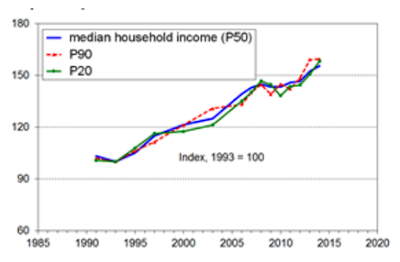We passed by this standard feature of American airports on our travels.
I've wondered why New Zealand doesn't do shoe-shine stands. I always took the opportunity to get a shine while travelling through American airports, even as a grad student. The operators are professionals. They have dozens of waxes and polishes, know exactly what's needed for your shoes, and have great patter. It's like going to a good barber, except for your shoes. And it's great watching a competent professional at his (usually his, at the ones I've seen) job.
When I tweeted complaining of New Zealand's lack of shoe-shine stands, I got this reply from James Shaw:
It doesn't seem implausible, but it still seems question-begging. Why do Kiwis consider it gauche to ask someone else to shine their shoes for money, but not to:@EricCrampton The physical structure reflects and amplifies the social structure.— James Shaw (@jamespeshaw) September 28, 2016
- Get a hot towel shave from a tattooed hipster barber;
- Get a manicure or pedicure;
- Pay for a massage;
- Hire a laundry or ironing service.
It looks like there's a great shoe-shine place in Vancouver airport, so it's not just some American thing. I'll stop there on my way home. The shoes are ...overdue.
In interest of revealing demand in hopes of inducing supply: were there a shoe shine stand at Wellington airport, I'd be happy to pay $15 for a shine every time I travelled through.
And it a Nathan's Famous or a Cinnabon wanted to open up there too, well, I'd get a lot more value out of that than I would out of heavily subsidised Singapore Airlines routes to Canberra.
And it a Nathan's Famous or a Cinnabon wanted to open up there too, well, I'd get a lot more value out of that than I would out of heavily subsidised Singapore Airlines routes to Canberra.





